
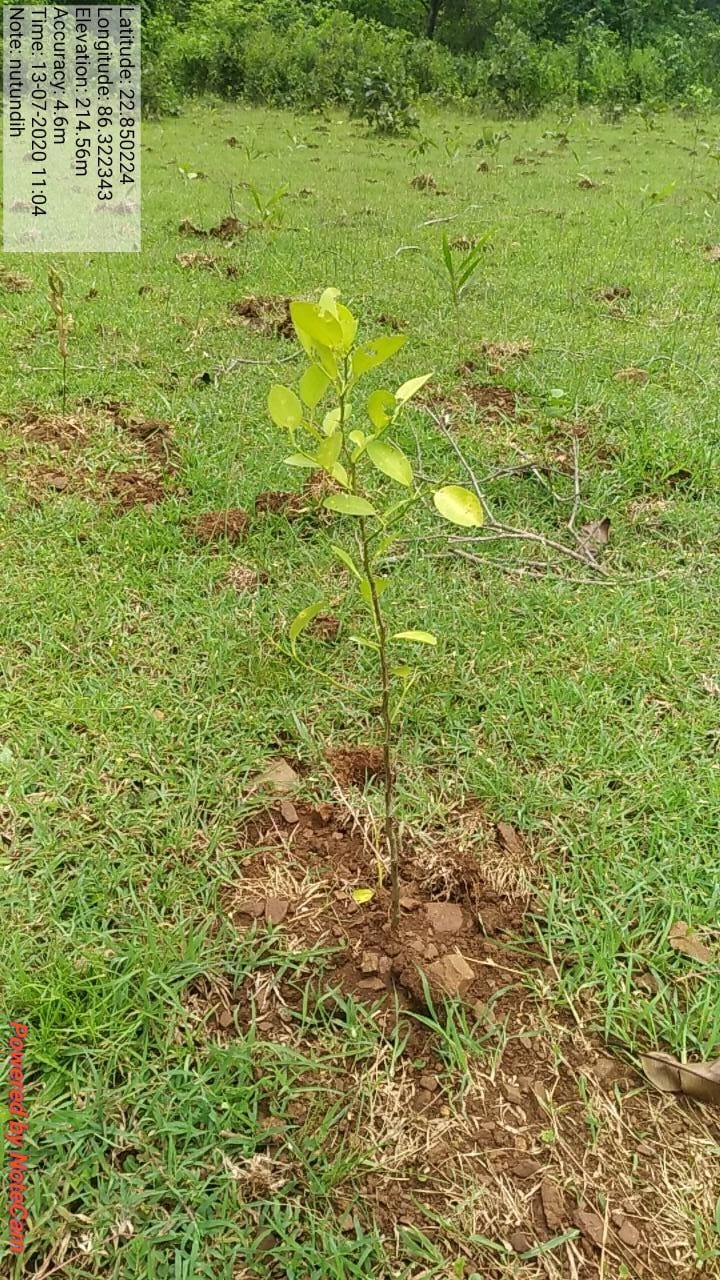
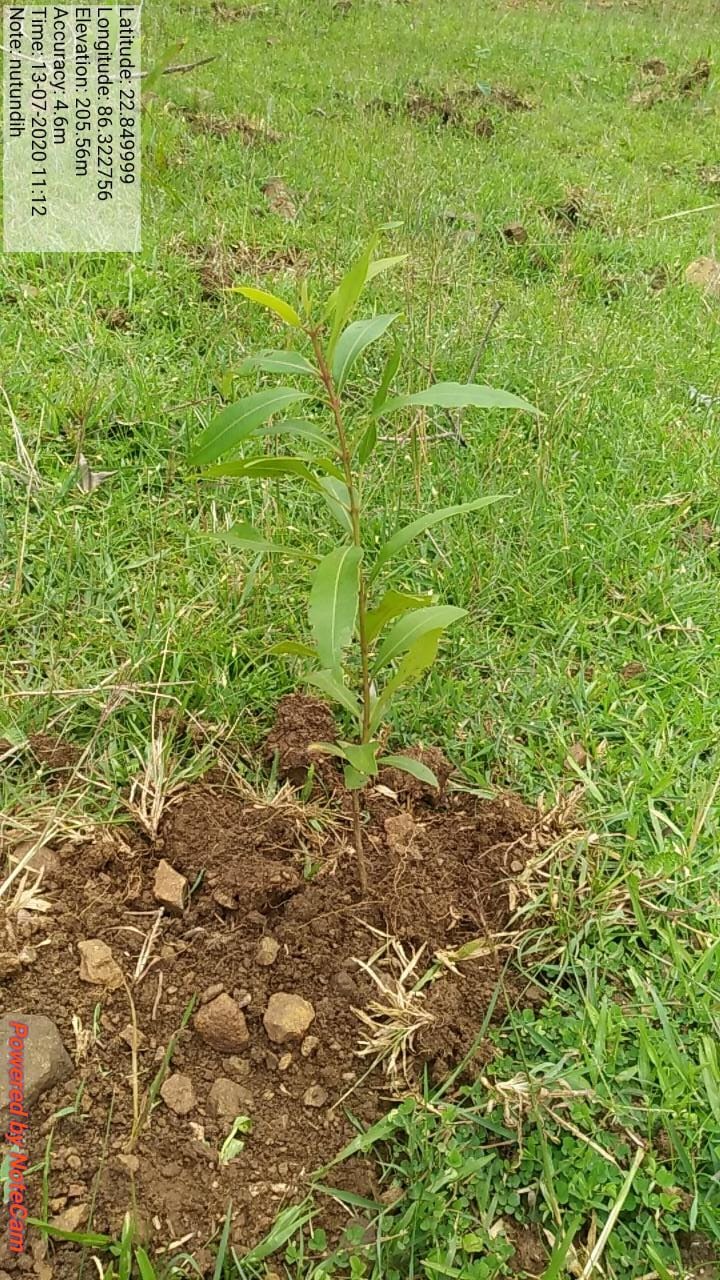



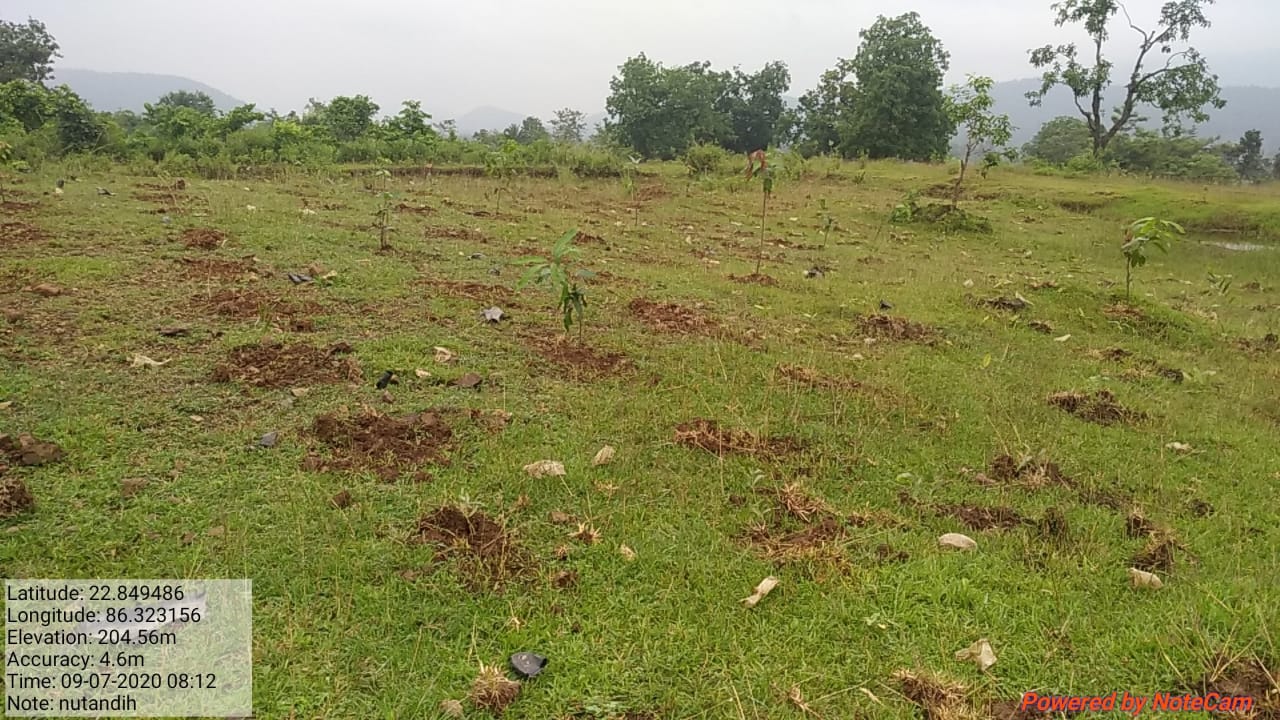
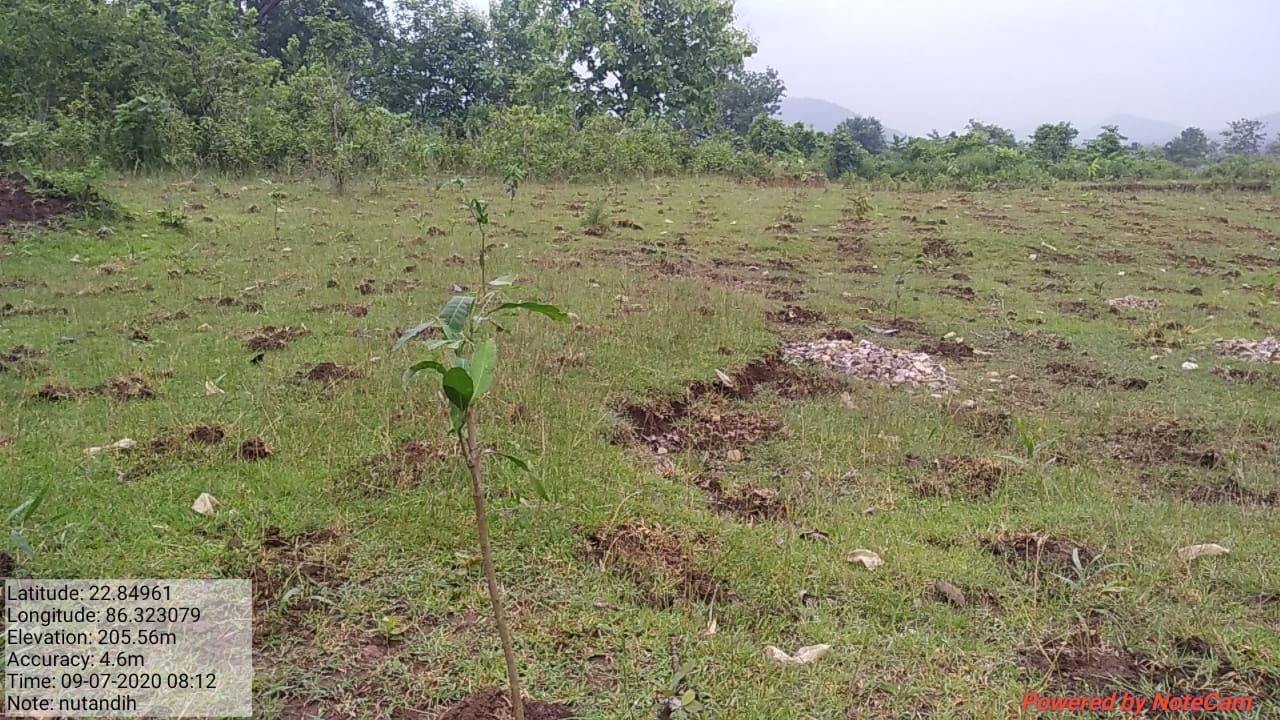
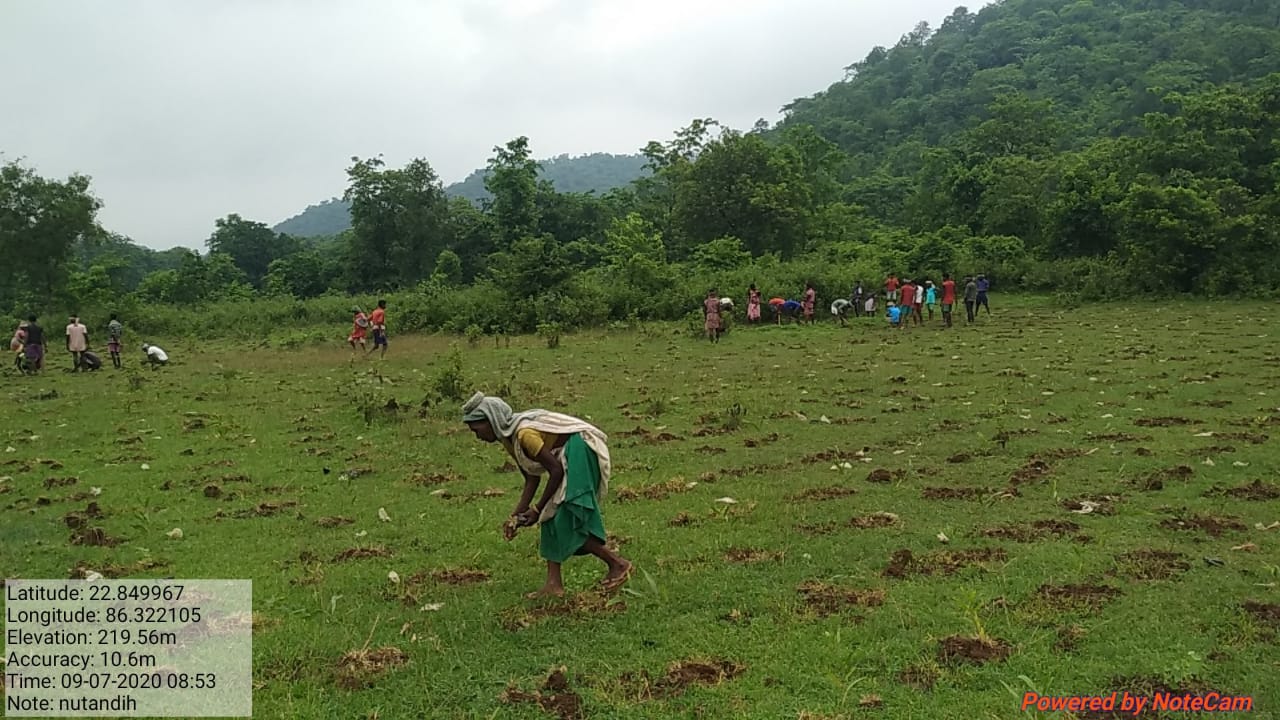

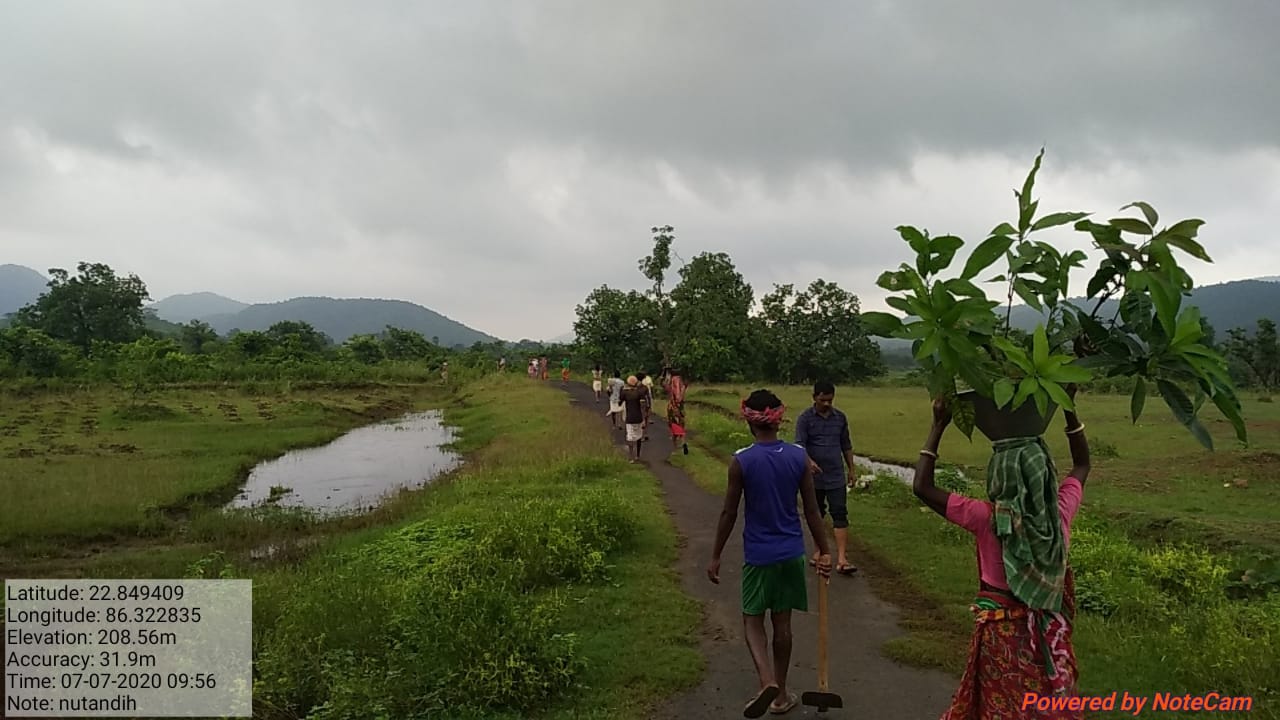
Project Target
0% Remaining
100,000
Trees Planted out of 100,000 Trees

Project Location:
The project involves plantation of local trees in Singhbum Elephant Reserve at Nutandih Village of Laylam Panchayat located in East Singhbum district in Jharkhand. The area around Laylam village is a corridor for the elephants which migrate from Odisha to West Bengal crossing the Dalma Wildlife Sanctuary in Jharkhand. Further, the project involves rejuvenation of a traditional water harvesting pond in the Panchayat area.
Project Aim
SDG
The project involves enlarging an existing pond in Laylam Village (2011 population: 1,673 people in 330 households) of the Laylam Panchayat where the plantation of 100,000 trees is being conducted, from a minimal capacity to a capacity of about 500,000 liters. The soil bored out after de-siltation has been accumulated at the corner and is made available to the local farmers to help them increase their output in the short term. The pond had been originally dug to fulfill the annual needs of the villagers, however, over the years, it started to aggregate layers of soil inside it, making the water capacity marginally small.
The current capacity of the pond is sufficient only till January-February after the end of monsoon, leading to water scarcity till the onset of the next monsoon season in June-July. During this period, villagers, their livestock and wildlife face great hardship from lack of easy access to water. The pond, which is based on surface runoff of water, will be enlarged to a length of 45 feet, width of 30 feet and depth of 15 feet. After the enlargement, the water pond should be able to suffice the needs of the villagers throughout the year. In the longer run, the pond will be co-managed by the village Panchayat.
Other expected outcomes from enlargement of the pond include:
In the year 2001-03 nearly 8,000 hectares of forest were lost in the West Singhbum district, Jharkhand due to iron ore, coal and limestone mining. Anthropogenic pressures due to agriculture, mining, and settlement expansion result in depletion or loss of natural habitat, forest corridors, and biodiversity. Loss of forest cover over the years has caused habitat fragmentation, human-elephant conflicts and a decline in the numbers of elephants seen in the Singhbhum Forests of India. S. Kulandaivel, the deputy conservator of forests and a former divisional forest officer of Bankura north division, says, “Due to depletion of natural food habitat in the forests, elephant herds have extended their habitat to cropland." (quoted by Ananda Banerjee in Livemint, November 25, 2016). Our goal is to restore the natural habitation, secure food sources for elephants, and provide shelter for them.
Elephants are classified as mega-herbivores, i.e., they are plant-eating mammals that weigh more than 2,200 lb (1,000 kg). They require up to 330 lb (150 kg) of plant material each day. The Indian Elephants "feed on renewable and periodically renewed plant parts. They consume a wide variety of fodder (the aerial shoots of grasses and bamboos, foliage and green twigs, herbaceous stems and bark, aerial roots, fruits and even some flowers) and need extensive, varied terrain to suit their far-ranging habit and seasonal variations of vegetation." (M. Krishnan, Sanctuary, Vol. II No. 1. Jan/Mar 1982).
In a research study published by Kalpana K. Mohapatra, A.K. Patra and D.S. Paramanik on 'Food and feeding behaviour of Asiatic Elephant (Elephas maximus Linn.) in Kuldiha Wild Life Sanctuary, Odisha, India', the consumption of tree species by the Indian elephant was found to be 56% as compared to shrubs (20%), herbs (14%) and climbers (10%). Mango (Mangifera indica) was found to be an extensive part of their diet. The Asian elephant distinguishes itself from its African counterpart because of its dependency on arboreal forests as opposed to grasslands. Due to the variation in habitat and climatic conditions prevalent across the two continents, the elephant population in Asia and more specifically India, depends on its tropical trees—consuming twigs, branches, stems, root, flowers, fruit etc
Elephants are also one of the significant ways in which trees disperse their seeds; some species rely entirely upon elephants for seed dispersal. Wherever they live, elephants leave dung that is full of seeds from the many plants they eat. When this dung is deposited the seeds are sown and grow into new grasses, bushes, and trees, boosting the health of the ecosystem. Trees for elephants® will create a more suitable habitat with improved food sources for elephants, reduce the existing human-elephant conflicts and help the natural regeneration of forests.
Karanj (Millettia pinnata), Sheesham (Dalbergia sissoo), Jackfruit (Artocarpus heterophyllus), Mango (Mangifera indica), Jamun (Syzygium cumini), Neem (Azadirachta indica), Bamboo (Bambusa vulgaris).
Plantation of 100,000 trees will help expand forest corridors and restore elephant migration routes between fragmented areas. Growing trees, providing fruit and fodder for elephants can reduce crop-raiding, thereby, protecting the income of the tribal communities in the area that constitute to 83.8% of the population according to Census 2011. Villagers from Laylam village will participate in the entire process of plantation activity such as the preparation of land, nursery development, pit digging, plantation, and nurturing planted saplings. Around 8,186 workdays of jobs will be created in the nursery and planting activity alone; additionally, there will be indirect employment and extra revenue from flowers, fruit, fodder, and fuel. Planting trees and enlarging the pond will protect the watershed, improve groundwater table, and reduce the impact of soil erosion. The trees will further absorb about 2 million kilograms of carbon every year when mature.
Social Impact of Growing Trees
Community Engagement
Tree planting initiatives often involve local communities, which can lead to greater community cohesion.
Ecological Education
Provides opportunities for community members, especially children, about the importance of environmental sustainability.
Urban Beautification
Trees contribute to the aesthetic enhancement of urban areas, making cities more pleasant and liveable.
Climate Resilience
By improving green cover, tree planting helps make communities more resilient against climate impacts like heatwaves.
Employment Creation
Planting trees creates employment for local community members like planting and maintenance, administrative roles, and more long-term jobs in management.
Wildlife Habitat
Trees provide critical habitats for various species of wildlife. Enhancing tree cover helps preserve biodiversity, which can be an ecological boon for local communities
Copyrights @ 2025 All rights reserved by Pangea EcoNetAssets Pvt Ltd.